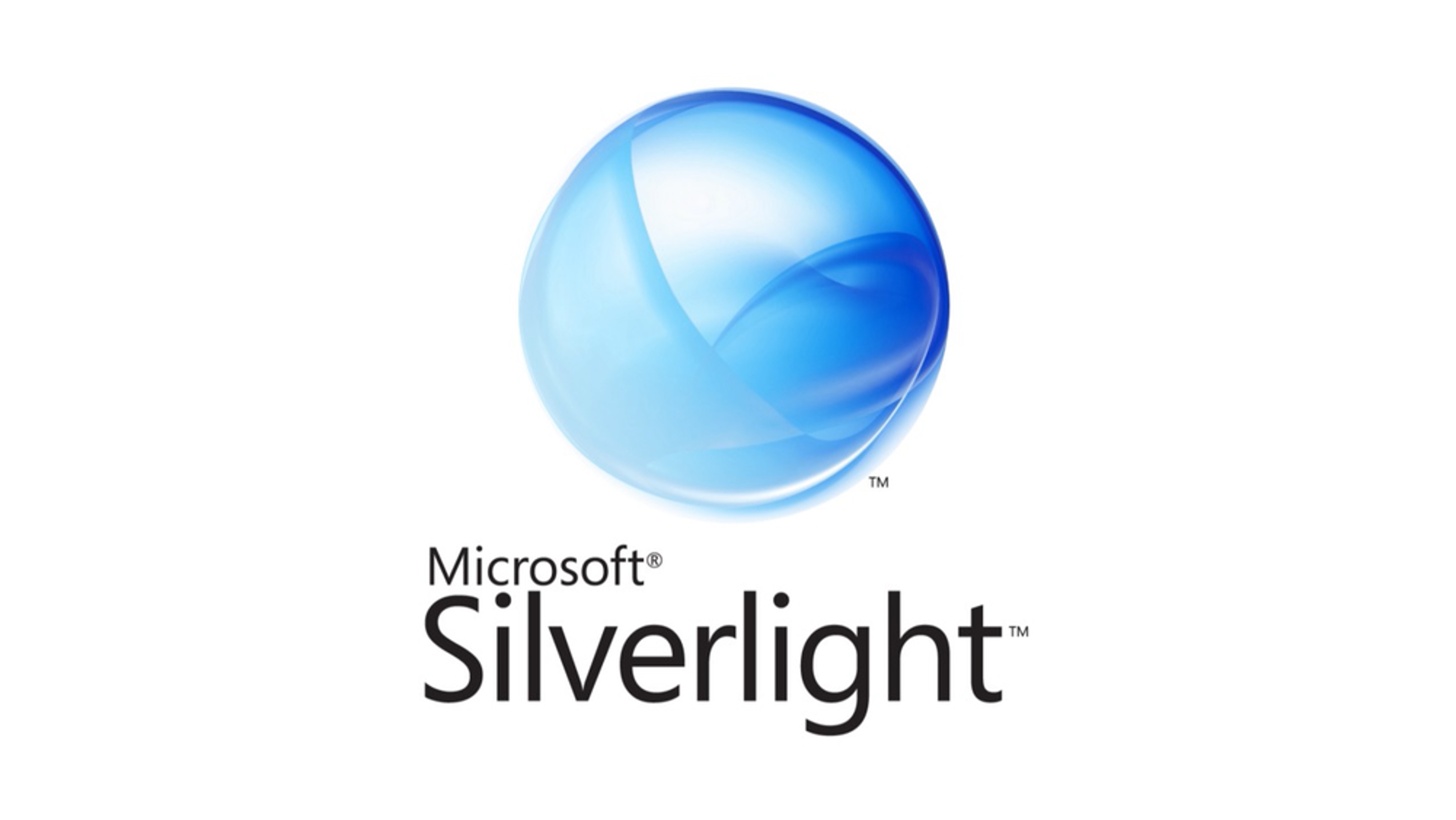Introduction
Microsoft Silverlight was once a popular browser plugin that allowed users to stream multimedia content, create rich internet applications, and view interactive media experiences. It was developed as a direct competitor to Adobe Flash, offering a versatile platform for delivering engaging user experiences across various devices and operating systems.
However, with the evolution of web technologies and the rise of HTML5, the relevance of Silverlight has diminished. Many modern web browsers, including Google Chrome, have discontinued support for Silverlight, making it challenging for users to access content that relies on this technology.
In this article, we will explore the concept of Microsoft Silverlight and delve into the steps to enable and use it within the Chrome browser. While the usage of Silverlight has declined over the years, there are still instances where users may encounter websites or applications that require Silverlight to function properly. Understanding how to work with Silverlight in Chrome can be valuable in such scenarios.
Let's embark on a journey to uncover the intricacies of Microsoft Silverlight and discover how it can be integrated into the Chrome browser for seamless access to Silverlight-dependent content.
What is Microsoft Silverlight?
Microsoft Silverlight was a versatile web application framework that gained prominence as a powerful tool for creating and delivering rich multimedia experiences on the internet. Launched as a direct competitor to Adobe Flash, Silverlight provided a platform for developing interactive and visually appealing content, including animations, graphics, audio, and video. It was designed to offer a consistent user experience across different browsers, devices, and operating systems, making it an attractive choice for developers seeking to engage audiences with compelling web applications.
One of the key features of Silverlight was its ability to support a wide range of media formats, enabling seamless streaming of audio and video content. This capability made it a popular choice for media streaming services and interactive applications that required dynamic multimedia elements. Additionally, Silverlight empowered developers to create sophisticated user interfaces with smooth animations and responsive interactions, enhancing the overall user experience.
Furthermore, Silverlight was equipped with a powerful programming model that allowed developers to leverage their existing skills in languages such as C# and XAML to build robust web applications. This integration with familiar programming languages made it easier for developers to transition from traditional desktop application development to web-based solutions, expanding the possibilities for creating feature-rich web experiences.
Despite its impressive capabilities, the relevance of Silverlight has waned in recent years, primarily due to the emergence of HTML5 as a dominant web standard for multimedia content and interactivity. As a result, major web browsers, including Google Chrome, have phased out support for Silverlight, prompting developers and content providers to transition to alternative technologies for delivering web-based experiences.
While the era of Silverlight may have passed, its impact on the evolution of web technologies is undeniable. The framework played a significant role in shaping the landscape of interactive web content and inspiring advancements in multimedia capabilities. Understanding the legacy of Microsoft Silverlight provides valuable insights into the evolution of web development and the continuous quest for delivering captivating user experiences on the internet.
How to enable Microsoft Silverlight in Chrome
Enabling Microsoft Silverlight in Chrome involves navigating through the browser's settings to allow the plugin to run. While Chrome has discontinued native support for Silverlight, users can still enable it by following a few simple steps. Here's a guide to enabling Microsoft Silverlight in Chrome:
-
Access Chrome Settings: Open Google Chrome and click on the three-dot menu icon located in the top-right corner of the browser window. From the dropdown menu, select "Settings" to access the browser's configuration options.
-
Navigate to Advanced Settings: Scroll down within the Settings page and click on "Advanced" to reveal additional configuration options.
-
Privacy and Security: Under the "Privacy and security" section, select "Site settings" to access the permissions and content settings for websites.
-
Flash and Silverlight Settings: Within the Site settings, locate the "Flash" and "Silverlight" options. Click on "Flash" to reveal the Flash settings, and then click on "Add" to allow specific websites to run Flash content. Similarly, click on "Add" under the Silverlight section to specify the websites where Silverlight should be enabled.
-
Add Website URLs: Enter the URLs of the websites that require Silverlight to function. This step ensures that Silverlight is only enabled for the specified websites, enhancing security and control over plugin usage.
-
Confirm Settings: After adding the relevant website URLs, click "Add" to save the changes. This action grants permission for the specified websites to run Silverlight content within the Chrome browser.
By following these steps, users can effectively enable Microsoft Silverlight for specific websites in Chrome, allowing them to access content that relies on Silverlight technology. It's important to note that while enabling Silverlight provides access to legacy content, users should be mindful of the security implications associated with running outdated plugins. As an alternative, considering modernizing web content to align with current web standards, such as HTML5, can ensure a seamless and secure user experience across different browsers and devices.
Enabling Microsoft Silverlight in Chrome requires a deliberate approach to managing plugin permissions, balancing the need to access legacy content with the imperative of maintaining a secure browsing environment. By leveraging the browser's settings, users can tailor the Silverlight permissions to align with their specific requirements, enabling a controlled and optimized browsing experience within the Chrome browser.
How to use Microsoft Silverlight in Chrome
Using Microsoft Silverlight in Chrome involves navigating the intricacies of plugin compatibility and leveraging the browser's settings to ensure seamless access to Silverlight-dependent content. While Chrome has discontinued native support for Silverlight, users can still utilize the plugin for specific websites that rely on its functionality. Here's a comprehensive guide on how to effectively use Microsoft Silverlight in Chrome:
1. Access Silverlight-Enabled Websites
Navigate to the websites that require Microsoft Silverlight to function properly. These websites may include legacy multimedia platforms, interactive applications, or enterprise systems that have yet to transition to modern web standards. By accessing these websites, users can identify the specific content or features that necessitate Silverlight, laying the groundwork for enabling the plugin within the Chrome browser.
2. Verify Silverlight Compatibility
Before attempting to use Microsoft Silverlight in Chrome, it's essential to verify the compatibility of the plugin with the specific website or application. Some websites may have deprecated Silverlight support or migrated to alternative technologies, rendering the plugin obsolete for certain content. By confirming the compatibility of Silverlight with the targeted websites, users can ascertain the relevance of enabling the plugin for their browsing needs.
3. Enable Silverlight Permissions
Following the steps outlined in the previous section on enabling Silverlight in Chrome, users can grant permissions for the specified websites to run Silverlight content. By adding the relevant website URLs to the browser's settings, users can ensure that Silverlight is enabled exclusively for the designated websites, maintaining a controlled and secure browsing environment. This deliberate approach to managing plugin permissions empowers users to access legacy content while mitigating the security risks associated with outdated plugins.
4. Interact with Silverlight Content
Once Microsoft Silverlight is enabled for the targeted websites, users can interact with the Silverlight-dependent content seamlessly within the Chrome browser. This may involve streaming multimedia, engaging with interactive applications, or accessing specific features that rely on Silverlight's capabilities. By leveraging the enabled plugin, users can experience the intended functionality of the websites, preserving access to legacy content that remains integral to their online activities.
5. Consider Modernization Alternatives
While using Microsoft Silverlight in Chrome provides access to legacy content, it's crucial to consider modernization alternatives for long-term sustainability. Encouraging the migration of websites and applications to contemporary web standards, such as HTML5, ensures compatibility across diverse browsers and devices, eliminating the reliance on outdated plugins. By embracing modernization initiatives, users can future-proof their online experiences and contribute to the evolution of web technologies.
By following these steps, users can effectively use Microsoft Silverlight in Chrome, enabling access to legacy content and maintaining compatibility with Silverlight-dependent websites. This approach empowers users to navigate the transition from legacy technologies to modern web standards, fostering a seamless and secure browsing experience within the Chrome browser.
Conclusion
In conclusion, the evolution of web technologies has reshaped the landscape of multimedia content delivery and interactive web experiences. Microsoft Silverlight, once a prominent player in the realm of web application frameworks, has witnessed a decline in relevance as modern web standards, particularly HTML5, have gained widespread adoption. Despite the diminishing usage of Silverlight, the ability to enable and use it within the Chrome browser can be valuable for accessing legacy content and navigating transitional phases in web development.
Enabling Microsoft Silverlight in Chrome involves a deliberate approach to managing plugin permissions, allowing users to specify the websites where Silverlight should be enabled while maintaining a secure browsing environment. By following the outlined steps, users can tailor the Silverlight permissions to align with their specific requirements, ensuring controlled access to legacy content that relies on Silverlight technology.
Furthermore, using Microsoft Silverlight in Chrome entails navigating the intricacies of plugin compatibility and leveraging the browser's settings to seamlessly access Silverlight-dependent content. By verifying compatibility, enabling permissions for designated websites, and interacting with Silverlight content, users can preserve access to legacy multimedia platforms, interactive applications, and enterprise systems that continue to rely on Silverlight's capabilities.
While the usage of Silverlight may be limited to specific legacy scenarios, it's essential to consider modernization alternatives for long-term sustainability. Encouraging the migration of websites and applications to contemporary web standards, such as HTML5, not only ensures compatibility across diverse browsers and devices but also eliminates the reliance on outdated plugins, contributing to the evolution of web technologies.
In essence, the journey to understand and integrate Microsoft Silverlight in Chrome provides insights into the dynamic nature of web technologies and the imperative of adapting to evolving standards. By embracing the possibilities of modern web standards while acknowledging the legacy of technologies like Silverlight, users can navigate the ever-changing web landscape with resilience and foresight, ensuring a seamless and secure browsing experience within the Chrome browser.

























